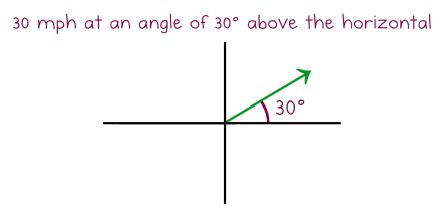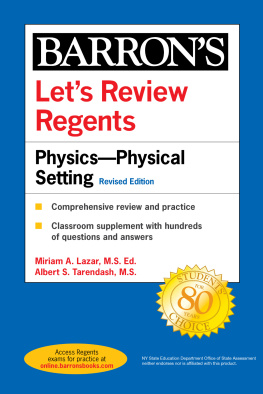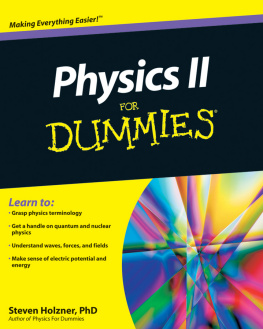The Complete Stick Figure Physics Welcome to the complete Stick Figure Physics Tutorials! This book covers rates of change, kinematics, momentum, springs, fluid mechanics, rotation, and electric circuits. If you get confused while working on it, please email me at so I can improve it! Or, say hello on my website: StickFigurePhysicsTutorials.com
Contents
A note about links: There are a ton of amazing resources online; great youtube videos, blog posts, and simulations, and I wanted to include them here in this book so that you can do more than just read about physics. However, Im sure these links will break at some point. So, if you come across a broken one, please email me and Ill fix it. Also, Ive included the title and author of every link, so you should still be able to find them by searching.
Kinematics
Kine means motion in ancient Greek.
So, kinematics is just the study of how things move. Kinematics will let you solve these kinds of problems: You are defending a town from pirates. You have a cannon which is mounted on a hill that is 40 m above sea level and pointed at a 45 degree angle. The cannon is 2 m long and exerts a force of 150 N as it fires. If your cannonball has a mass of 10 kg, how far away do the pirate ships need to be when you fire the cannon?  (Well solve this one at the end.)
(Well solve this one at the end.)
Equations of Motion
Here are the equations you need to know to solve kinematics (motion) problems:


Try this: If a car drives at 60 mph, how much time does it take to go 150 miles?

Check your answer: In this question we have speed (v) and distance (d or x) and we are solving for time. That means we should use this equation:

(Our units are not in meters and meters per second, but since our distance is in miles and our speed is in miles per hour, we can just use those numbers, rather than converting.
Just make a mental note that our answer for t will be in hours.)  Try this: A bullet is travelling at 120 m/s. It hits a tree and embeds itself 10 centimeters deep. What was its average acceleration?
Try this: A bullet is travelling at 120 m/s. It hits a tree and embeds itself 10 centimeters deep. What was its average acceleration?
Check your answer: First, convert centimeters to meters: 10 cm = 0 .1 m Next, well use the equation that does not include time:

Our final velocity is zero, because the bullet comes to a complete stop..1 m is our x, and our initial velocity is 120 m/s. Well plug this into our equation and solve:

(Our answer is negative because we made the velocity positive and our acceleration was in the direction opposite to the direction we were travelling.) Try This: A ball is thrown straight up in the air with a velocity of 20 m/s. It goes up, comes back down, and is caught at the same height it was thrown from. How long does it take until it is caught?
Check your answer: The easiest way to solve this one is by finding the time it takes for the ball to reach its maximum height.
This is because the velocity of the ball is zero at its max height. And, the time it takes to go up is half the total time. Well use this equation:  The acceleration due to gravity is 9.8 m/s . Plug in numbers and solve:
The acceleration due to gravity is 9.8 m/s . Plug in numbers and solve:  Then, to find the total time we just double that:
Then, to find the total time we just double that:  Try This: How high in the air does a ball go if it is thrown with a vertical velocity of 20 m/s?
Try This: How high in the air does a ball go if it is thrown with a vertical velocity of 20 m/s?
Check your answer: We know from the previous problem that it takes 2.04 seconds for the ball to reach its maximum height. We can use that information in this equation:

Although, since its moving vertically, Ill write it like this:

All we do is plug in our initial height, velocity, acceleration, and time, and solve for y!

(Be careful about signs. Notice that the acceleration due to gravity is negative, because it pulls things down, and that the velocity was positive, because it was initially thrown upwards.)
Fun Stuff
Heres a fun simulation to play around with from the University of Colorado: Projectile Motion (PhET) Some things to try: - What is the highest you can make an object go?
- If you turn air resistance on, but keep everything else the same, what will happen to the path the object takes? - If you change the diameter of the object, what happens to its path? Why? - How can you increase the time the object spends in the air? What should the diameter be? What should the angle be? What should the speed be? Heres a fun hands-on project you can try: Spoon Catapult
Vectors
A vector is just an amount of something in a certain direction.
Velocity is a vector because it is speed in a specific direction. For example,  Is not the same thing as
Is not the same thing as  If a number just has an amount and not a direction, then it is called a scalar. Try This: Is the amount of time you spend sleeping a scalar or a vector?
If a number just has an amount and not a direction, then it is called a scalar. Try This: Is the amount of time you spend sleeping a scalar or a vector?
Check your answer: A scalar. Because it only makes sense to talk about a certain amount of time, rather than time in a certain direction. Try this: Is velocity a scalar or a vector?
Check your answer: Velocity is a vector. (Just by definition. (Just by definition.
If you say your speed is 30 mph it just means that youve said how fast youre going but not in what direction.) Try this: Is temperature a scalar or a vector?
Check your answer: A scalar. Temperature only has an amount, not a direction, so it is a scalar. There are two ways to write vectors: Magnitude and direction form:













 (Well solve this one at the end.)
(Well solve this one at the end.)


 (Our units are not in meters and meters per second, but since our distance is in miles and our speed is in miles per hour, we can just use those numbers, rather than converting.
(Our units are not in meters and meters per second, but since our distance is in miles and our speed is in miles per hour, we can just use those numbers, rather than converting.  Try this: A bullet is travelling at 120 m/s. It hits a tree and embeds itself 10 centimeters deep. What was its average acceleration?
Try this: A bullet is travelling at 120 m/s. It hits a tree and embeds itself 10 centimeters deep. What was its average acceleration? Our final velocity is zero, because the bullet comes to a complete stop..1 m is our x, and our initial velocity is 120 m/s. Well plug this into our equation and solve:
Our final velocity is zero, because the bullet comes to a complete stop..1 m is our x, and our initial velocity is 120 m/s. Well plug this into our equation and solve:  (Our answer is negative because we made the velocity positive and our acceleration was in the direction opposite to the direction we were travelling.) Try This: A ball is thrown straight up in the air with a velocity of 20 m/s. It goes up, comes back down, and is caught at the same height it was thrown from. How long does it take until it is caught?
(Our answer is negative because we made the velocity positive and our acceleration was in the direction opposite to the direction we were travelling.) Try This: A ball is thrown straight up in the air with a velocity of 20 m/s. It goes up, comes back down, and is caught at the same height it was thrown from. How long does it take until it is caught?  The acceleration due to gravity is 9.8 m/s . Plug in numbers and solve:
The acceleration due to gravity is 9.8 m/s . Plug in numbers and solve:  Then, to find the total time we just double that:
Then, to find the total time we just double that:  Try This: How high in the air does a ball go if it is thrown with a vertical velocity of 20 m/s?
Try This: How high in the air does a ball go if it is thrown with a vertical velocity of 20 m/s? Although, since its moving vertically, Ill write it like this:
Although, since its moving vertically, Ill write it like this:  All we do is plug in our initial height, velocity, acceleration, and time, and solve for y!
All we do is plug in our initial height, velocity, acceleration, and time, and solve for y!  (Be careful about signs. Notice that the acceleration due to gravity is negative, because it pulls things down, and that the velocity was positive, because it was initially thrown upwards.)
(Be careful about signs. Notice that the acceleration due to gravity is negative, because it pulls things down, and that the velocity was positive, because it was initially thrown upwards.)  Is not the same thing as
Is not the same thing as  If a number just has an amount and not a direction, then it is called a scalar. Try This: Is the amount of time you spend sleeping a scalar or a vector?
If a number just has an amount and not a direction, then it is called a scalar. Try This: Is the amount of time you spend sleeping a scalar or a vector?